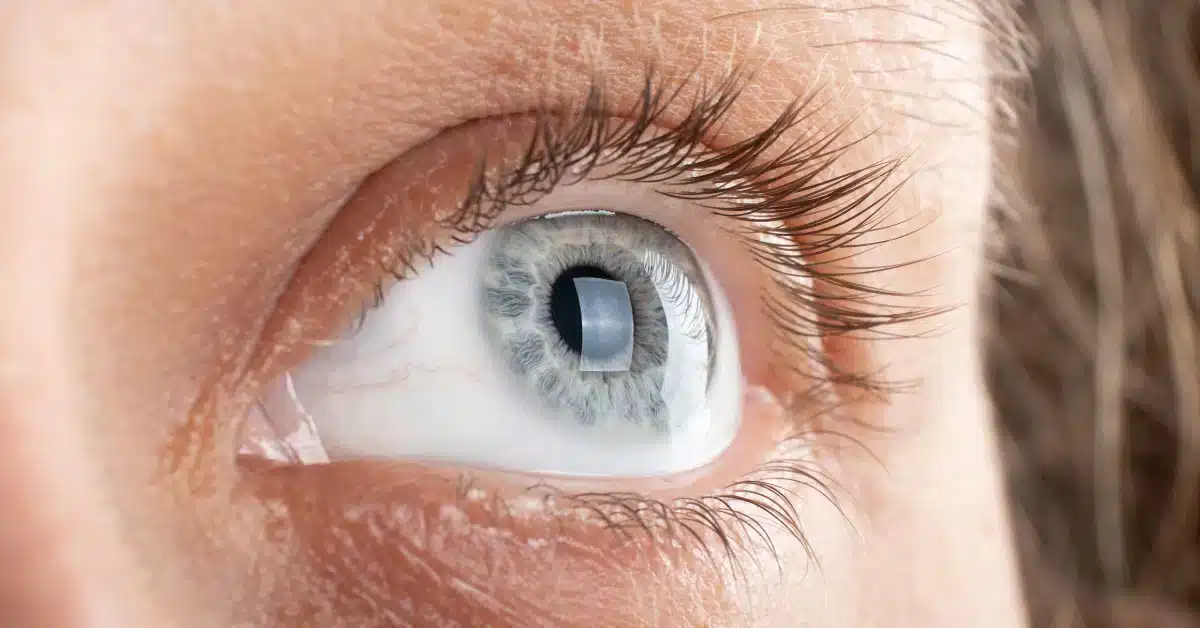Fungal Corneal Ulcer: A Comprehensive Guide
A fungal corneal ulcer is a Fungal infection or inflammation in the cornea.
It is also known as “Fungal Keratitis.”
According to NCBI, a fungal corneal ulcer is the cause of about 40% to 50% of microbial keratitis cases worldwide.
It is more common in developing nations due to location and socioeconomic status.
It is a severe condition that might lead to blindness if not treated properly.
Read on to learn more about Corneal Ulcers.
Symptoms of Fungal Corneal Ulcer
The symptoms of a Fungal corneal ulcer can emerge over a few days.
It is slow yet persistent.
Symptoms of fungal corneal ulcers include
- Photophobia or extreme sensitivity to light
- Excessive tearing
- Eye discharge
- Eye pain
- Eye redness
- Blurred vision
- A sensation of a foreign body
You might have Corneal Fungal Ulcer, and late treatment might lead to blindness.
What are the signs of a Fungal Corneal Ulcer?
Signs of a Fungal corneal ulcer can be both specific and non-specific.
Specific Signs of Fungal Corneal ulcer include
- Satellite lesions
- Brown/gray pigmentation
- Dry and rough texture
- Elevated edges
- Feathery, irregular margins
- Hypopyon
Non-specific signs of Fungal Corneal Ulcer include
- Conjunctival injection
- Epithelial defect
Causes of Fungal Corneal Ulcer
Fungal infection in the cornea is the cause of a Fungal corneal ulcer.
Other common causes include:
Eye trauma
An eye injury inflicted by plant matter like thorns, plants, or sticks is the most frequent cause of Fungal Corneal Ulcer.
More than 100 species of fungi can cause fungal corneal ulcers, but Fusarium, Aspergillus, and Candida species are the most common causes of fungal corneal ulcers.
A person is more prone to a Fungal corneal ulcer when working in the agriculture sector or outdoors.
Contact lens usage

The fungi in the environment and skin might get inside our eyes.
This can happen due to the overuse of contact lenses and improper maintenance.
It is always advised to maintain your contact lenses properly.
Diagnosis
The diagnosis is made through a simple procedure.
The doctor takes a swab from a tiny segment of the eye.
This segment is then sent to the laboratory for testing.
After the test results are given, the doctor can decide on a proper course of treatment.
Treatment of Fungal Corneal Ulcers

It is one of the most challenging forms of Corneal ulcers to diagnose and treat.
The effectiveness of treatment is based on the accurate identification of the fungi.
The primary treatment involves prescription antifungal eye drops or oral medication.
If the infection persists, the doctor might recommend surgeries like Corneal Transplant.
It is an operation in which a part of the cornea is replaced with corneal tissue from a donor.
Risk factors
Various risk factors can lead to Fungal Corneal Ulcers.
Some of them include
- Use of steroid eye drops
- Dry eyes
- Weak immune system
- Injury or chemical burns
- Eyelid disorders that prevent proper functioning of the eyelid
- Contact lens wearers
- Recent eye trauma or injury
Takeaway
Fungal Corneal Ulcer is an infection that is caused due to fungus.
It is a severe condition that might lead to vision impairment without proper treatment.
Surgical treatment like Corneal Transplant might be needed in severe cases.
Symptoms of Fungal Corneal Ulcer can be both specific and non-specific.
One should consult their doctor immediately, in case there is any symptom, to get a proper diagnosis and treatment.
Frequently Asked Questions
What is a fungal corneal ulcer?
A Fungal Corneal ulcer is a fungal infection in the cornea. It might result from eye trauma or injury, especially vegetative or plant matters like plants, thorns, or sticks. It is most common in tropical and subtropical areas. It might also lead to vision impairment if not treated properly.
How do you treat fungal corneal ulcers?
First, a proper diagnosis of the infection is made by an eye specialist, and then depending on its findings, it can be treated with antifungal eye drops or oral medications. If it persists, then a corneal transplant surgery might be needed.
What is the most common cause of fungal corneal ulcers?
The most common cause of fungal corneal ulcers is an eye injury or trauma caused by plant or vegetative matters like thorns and sticks. The most common fungi that cause fungal corneal ulcers are Fusarium, Aspergillus, and Candida species.
WowRx uses only high-quality sources while writing our articles. Please read our content information policy to know more about how we keep our content reliable and trustworthy.






